
The FPJ Big 50 Products ranks the 50 best-selling fresh fruit and vegetable products by sales value, using Kantar Worldpanel data for the 52 w/e 21 May 2017.
26. Nectarines
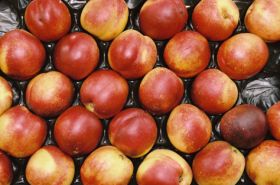
Sales suffer after a 2016 to forget
Across the stonefruit category, 2016 was a real challenge and nectarines were the hardest hit.
According to Jo Mumford of stonefruit supplier Chingford Fruit, sales were poor during the northern hemisphere season, with shoppers buying less volume per trip and fewer consumers shopping the fixture.
Last summer the sector also failed to match the competition from other categories as spend shifted to berries and citrus, and lower availability hampered sales. Nectarines were badly affected in this respect, with difficult growing conditions causing volumes to fall 14.3 per cent over the 12 months to 21 May. “Last summer was a disaster in Spain,” says Matt Hancock of Norton Folgate. “Fruit quality was poor, availability was difficult and early season prices were very high.”
A sharp rise in temperatures in May accelerated the start of the 2017 season in Spain, with many producers forced to harvest their fruit early in order to preserve its condition in coldstores, but this came too late to influence sales figures for this year’s FPJ Big 50 Products.
Going forward, ripe and ready product continues to offer good potential, according to Paul Dean of Total Worldfresh, but there is still work to do to invigorate the category, which continues to be centred around the netted punnet.
27. Lemons
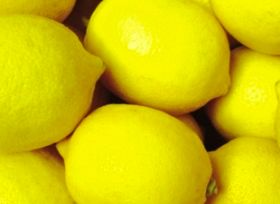
Southern shortages boost revenues
Lemons have enjoyed another strong year, with food and drinks trends continuing to boost the category.
A rise in scratch cooking, increased usage in water and the growing popularity of gin have all helped drive sales, but the main reason for this year’s growth has been price. John Hopkins of Capespan puts it down to “significantly increased market prices in the 2016 southern hemisphere season due, mainly, to a second year of availability shortages from key supply countries Argentina and South Africa.”
The procurement manager expects market price trends to “mellow” in the 2017 southern hemisphere season due to “increased availability from traditional supply sources; the rise of production from newer sources such as Chile and Bolivia; and lower demand from key markets in eastern Europe.”
But this does not change some of the purchasing habits being seen in the UK, he says, with a strong movement towards seedless, wax-free and organic production, particularly in Spain.
Looking forward, Stuart Ansell of MMG Citrus sees opportunities to develop sales of Pink Tiger striped lemons. “We have very minimal access to product at the moment because the trees are quite young, but in future I’d see that as a niche line,” he says. “Something a bit quirky.”
28. Plums
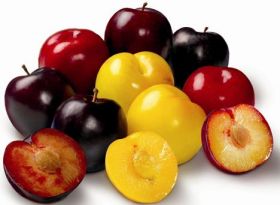
Plums standing still despite volume gains
Despite a solid rise in volume sales, plums have had a static year, with price deflation denting revenues.
Supply has been good, according to Matt Hancock, managing director of Poupart Produce’s stonefruit arm Norton Folgate, with the French season beginning 15 days early and showing good potential. There was also better availability of early season plums from Spain, he says. But not much has changed in terms of formats and promotional mechanics in the sector. “In stonefruit it’s about modernising the category,” says Paul Dean, marketing manager at Total Worldfresh.
One way to do this is to develop the ripe-and-ready offer in plums, he believes, particularly if suppliers and retailers hope to entice new customers into the category.
“The shift towards top-up shopping is suiting the berry category really well but stonefruit is still largely centred around the netted punnet,” Dean says. “It’s fine for a customer who knows what they’re doing but for someone who’s new to the category it’s not great. We need to address that demand for immediate consumption.”
At retail, premium product and larger pack sizes are also performing well, Dean says. But netted punnets have not progressed much in sales terms.
29. Cabbage
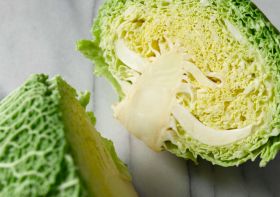
Stagnating prices block cabbage growth
Recent hot temperatures caused problems for many brassicas, but in cabbage it’s price, and not climate, that is threatening the future of the category.
While value has seen positive growth this year, cabbage retains its perception as a commodity without any of the NPD seen among its brassica relatives. Southern England Farms’ managing director Greville Richards says cabbage declines are “concerning”. “Savoy sales are down, spring greens are down. We’re okay as a we have a large market share but the brassica business is in a bit of a crisis,” he says.
Lincolnshire Field Products’ managing director Martin Tate told FPJ recently that many of the big brassica lines are seeing acreage declines due to stagnating prices and rising costs. “Individually and collectively we need to understand our costs. I believe consumption by individuals, at home, in pubs or in restaurants, of good-quality English vegetables is increasing. That remains an opportunity,” he said.
Exports is one area those in cabbage supply could look for future gains, as it’s a similar story in Europe with brassica acreage reductions, meaning suppliers are looking further afield. Freshtime’s head of agronomy Mel Miles says the food-to-go and prepared channels also offer opportunities.
30. Sweetcorn
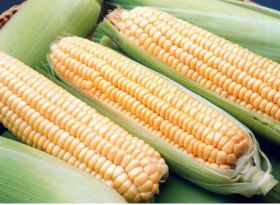
Success story continues to shine
Sweetcorn has been one of the strongest performers in the vegetable category in recent years, boosted by universal popularity among young and older shoppers, the rise of eating out and its appearance in everything from ready meals to fast food menus.
Growth in the past year has come from consumers buying more often at a higher average price, according to leading supplier Barfoots, while supermarkets have been moving away from aggressive price promotions, leading to an increase in the average price per kilo.
Convenient and versatile, sweetcorn ticks many of the boxes of the modern consumer, as well as being a favourite of the growing numbers of gluten-averse. “Sweetcorn benefits from being naturally gluten free and also has a wealth of other health benefits such as it containing less sugar than an average apple,” says Barfoots’ commercial director Juan-Carlos Leon.
A vintage summer of hot weather has turbocharged sales of barbecue food, meaning next year’s figures are likely to continue the strong upward trend, while new summer pack formats including a variety of flavoured butters are adding colour to the category.
And with less than a third of UK households currently buying fresh sweetcorn, there’s plenty of room for further growth.



